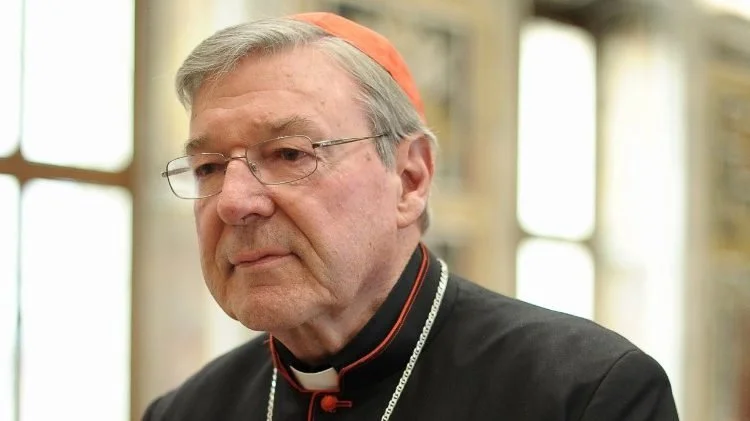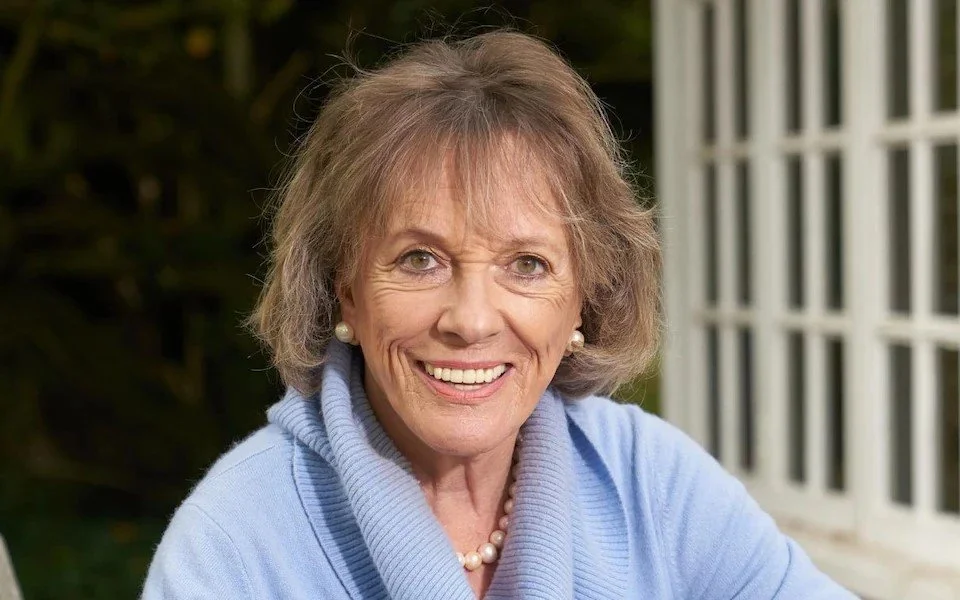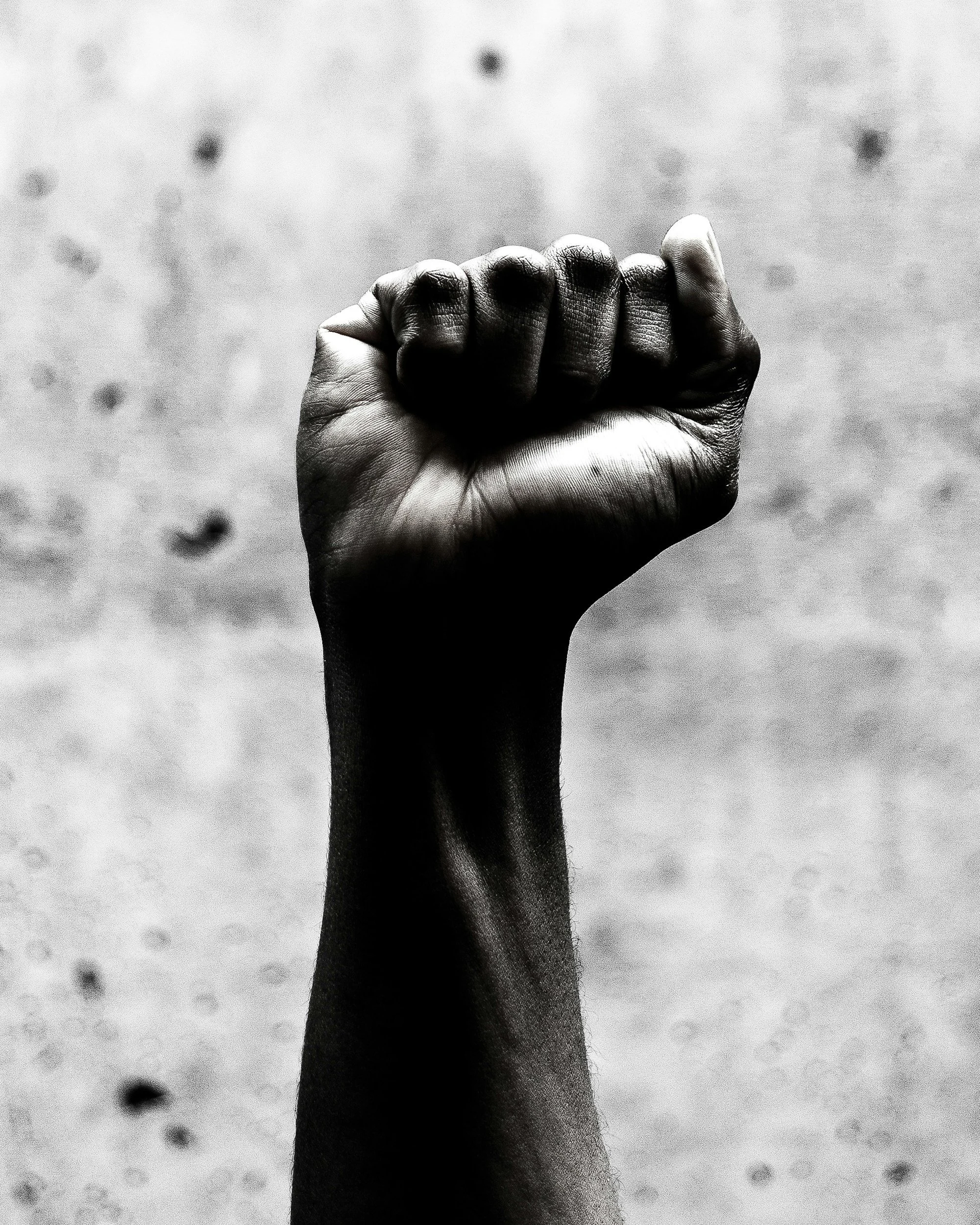7th September 2021 begins the centenary year of the Legion of Mary, founded by Frank Duff in Dublin. With millions of members across the world, the organisation is the defining legacy of the Twentieth Century Irish Catholic Church. Oft neglected are some of Duff’s writings, which are perceptive, provoking and rich in wisdom.
I have heard legionaries confess to their feelings of extreme apprehension when a difficult work was about to start. What they had measured up and cheerfully committed themselves to, now took on the aspect of danger and folly. The temptation rises up in them to seek an excuse for backing out. Panic takes possession, which means that one has become irrational, virtually an animal. We must redeem ourselves from that condition.
It is not so difficult; a touch of logic brings the brain into control once again.
A simple reflection is: "What sort of soldier am I? The moment the battle impends I wish to take to flight!"
Secondly, one should always put to oneself this simple question: "What am I afraid of?" Very often that question demolishes the fear. It did in the case of a legionary who was overcome by panic when about to enter Russia. But she asked herself that question and it dispelled the panic. For she realised that the worst that could happen would be that she would be sent home. Thirdly, it is one of our mental kinks that on the eve of a momentous and carefully planned undertaking misgivings rush in and declare it to be lunacy. Chaos rules where all had seemed so clear. The enterprise is in danger.
Dealing with such a situation, Hindenburg, the former German Chancellor, says that we must never change plans at the last minute; that history, the great summary of experience, supplies the watch word: "Hold firm." Fourthly. and here I become more positive, more in line with legionary thinking and with Peregrinatio idealism. Do you want to go off on something with no formidable or disadvantageous aspects? A P.P.C. project offers excitement, congenial company, new and strange experience, a certain glamour.
If it meant no more than that to you, it would be a cheap programme. It is a vital consideration that the attraction of the ancient Peregrinatio lay just in features of an intimidating character. That Peregrinatio was not a pure missionary enterprise. It was a pursuit of souls plus other ingredients. Those indomitable monks did not intend their pursuit of souls to be a mere picnic- to use Edel Ouinn's word. They wished it to be not only an uncompromising response on their part to the command of Our Lord on Mount Olivet but also to His other one that we take up our cross daily and follow Him; and also to His startling injunctions on the subject of heroic faith.
Previously I have discussed with you that wonderful moment of the Ascension.
He Whom they now know to be God delivers that Commission that they ran�sack the whole world for souls. Then, as they gaze in stupefaction, He raises Himself up and finally a cloud receives Him into itself and they see Him no more. It would be absurd to suppose that they set themselves at once to a deliberate contemplation of that world adventure to which He had bound them. They would be too confused for that. Moreover, be�tween now and the time of that going forth there is to be something else which is so thrilling, so over�whelming as to absorb all their thought. That is the promise of the Paraclete Who is to come and do extraordinary things to them, to fit them for all that lies before them.
That prospect, like a thick veil obscuring everything else, postponed real thinking about the conquest of the world. But the moment that the transforming event of Pentecost took place, they set themselves to their task in the wide world, about which so little was known. That contemplation must have been a most formidable one, even fantastic to persons who had never travelled out beyond their own little country.
It was that same sort of proposition which presented itself to the minds of the Irish monks 500 years later. But of course there were differences. The Christian Faith already had a history. The purely apostolic age was over. The Faith had been announced over much of the known world and had been embraced by multitudes. Many too had laid down their lives for it in 'the persecutions which raged against the infant Church. Moreover, something which was unbelievable, impossible, had taken place. The supreme enemy, Rome the persecutor, had been converted and had become the arch-supporter. All its paraphernalia of power had been thrown into the work of spreading Christianity throughout the Empire. The triumph had been bigger and quicker than anyone could have imagined. The world seemed to be converted, or practically so.
But no. Things were far from being as good as they seemed. The arch-support collapsed, the Roman Empire fell, and it brought down the Church with it. Perhaps in this was intended to lie a Divine warning: that God builds His Church with supernatural bricks. These alone last. The human props serve a temporary purpose, but the builders should see them in that light and should not rely upon them. Build away while the help of the scaffolding is there, but do not lag lest the props be taken away before we are ready.
The Roman Empire had played that role of support for the Church at a period when it was necessary. Let us suppose that God had appointed a term of a century or so for the Church to construct firm fabric. to turn into true Christian cells the half-baked material that flowed in because of the State encouragement? Are we to go on to suppose that the builders were lax? That they relied on the permanence of the Empire; and that they did not impart solidarity to the individual cells?
Whether or not this imagining is precisely justified. there would seem to be a just reasoning in it. It is conformed to the method of God as we see it-around us in lesser manifestations. In any case there would appear to be a drastic lesson in that Empire collapse. It is that Church authorities should take unto themselves the wise thought of Shakespeare. which echoes the Psalm: "Put not your trust in princes nor in the faith of men" (Ps. 145).
Unhappily that same lesson had to be repeated many times afterwards. The Church put its trust in governments and in human policies. and these always failed it in the end. And during those spells of confidence it was content with gerry-building. The only safe construction lies in the filling of the individual parts with true faith. If there are circumstances in play which help the Church. such as a favourable government or other external force. it should not be used as an excuse for relaxing one's own effort. On the contrary that favouring climate should be availed of to work the harder and build the better. We can never afford to relax in regard to souls because they relax in unison with us. But apart from this. it must be borne in mind that the friendly government will change its tune after a while. and so will everyone of those other pro�pitious circumstances. Supports will fall away from under us. and the favour of today may be hostility in the next generation.
However that may be, the fall of the Roman Empire laid waste the world. The state, the style. the noble -edifice of imperial Rome with its far-extended might, its splendid institutions and culture, its order and dignity, its Pax Romana, and its office as educator of the nations-all dissolved into chaos and dust. Never before had the like existed and we must pray that such may never again come on earth. We might almost compare the resulting situation to the Deluge in which everything of the old world perished except what was carried in the Ark.
The picture of the post-Roman Europe could not be exceeded for desolation. The arts and crafts ceased to be practised. Agriculture was neglected, for who would sow when he saw no prospect of reaping. Europe drifted back into its primeval state of forest-land, in clearings of which lived communities. In the main there were two broad categories of survival: To attach oneself to the retinue of some great baron or to re�main savagely independent through brigandage.
Pope Pius XI, summing up that scene, declared that Christianity was humanly speaking a lost cause. It was a sort of re-enactment of Good Friday when Christ Himself appeared to be a lost cause.
But the great Pope, goes on to say that God had provided a remedy which would restore Christianity.
It was the monks of the West.
These poured out from their little Isle into that continental wilderness. They invaded nearly every part of it. They rebuilt the lost Faith, built it better than it was before because this time it depended on conviction and not on State scaffolding. They may be said to have made modern Catholicism. That was the Peregrinatio pro Christo.
They would have viewed their mission in a very different way from that in which the Apostles looked on theirs. Much more was known about the world than in the year 33. Christianity moreover had taken root. It might have been laid waste over most of the world but those monks would have seen that as a mere temporary calamity which must be repaired. Certainly ( the Faith was not suffering in Ireland. It was new there and boiling with fervour. The monks were providentially ready for a supreme adventure of that kind.
In one respect the prospect was worse than faced the Apostles. To the latter the world more or less meant Rome. Its hand held or overshadowed the known world and throughout its expanse the Roman civilisation and Roman law and order prevailed. One could travel.
But the Europe of St. Columbanus and his followers was in collapse. Law did not exist. Might was right. Those like the monks who did not carry arms would probably be thrown back for protection on their religious habits. In their missions they would have to penetrate the vast forests in which wild animals lived. So their adventure was as brave as that of the Apostles.
They were taking to themselves in fullness and in literalness the Ascension words of Christ. They were going to do what He had ordered. The dangers or obstacles in the way meant nothing to them. In fact an extraordinary element is observable in their outlook. It was not simply that they saw a star and followed it with a total disregard for the pains and penalties. No, we-see from their Annals that those pains were clearly seen and were eagerly desired. They wanted to carry the Cross of Jesus as well as to preach like Him.
Another distinctive feature in them was what one would have to call a reckless faith. Such was it that some would allege it as a defect. Because we are not supposed to put care and common caution altogether aside. Prudence has its due place; it is not a vice. But those incredible persons had no room in their make-up for any half-measures. They saw their mission as a way of pure faith and they were determined to apply their faith all along and in every circumstance. Such an uncompromising vision naturally tends to disregard any circumspection as a weakness. In fact they seemed to set at defiance what are now proposed as the rules of prudence. But perhaps those modem rules go too far in the other direction and hamper faith. Much of what is being prescribed today would seem to undo faith. In any case the monks' method built up religion whereas the new sceptical method is disintegrating it before our eyes. So much so that humanism and social science are being proposed as substitutes for religion.
St. Brendan and his companions in their earlier voyages did not use sails. They used oars, which of course ministered to another facet of their faith, the desire for penance. The Peregrinatio was specifically seen as an exercise of penance. A very large element of that penance was the perpetual exiling of themselves from their own country.
St. Columbanus, finding his group without an abode where they were about to build a monastery, heard of an immense cave which could accommodate them. But it was in the occupancy of a ferocious bear. The Saint went over to the cave where its owner stood menacingly in the entrance to receive him. Columbanus addressed him as if he were a human being; informed him about their need; suggested that the bear could more easily than they find alternative lodging; and finally requested him to give them possession. Throughout this oration the bear listened as if with understanding. When it was finished, he at once shambled peacefully away.
Nor was there in the method of the monks any special effort to conciliate the great; rather the contrary. The highest were treated as members of the flock and told their duty and defects. They did not like this, for the great are seldom humble. Frequently the monks had to pay the price for their frankness. It secured St. Columbanus's expulsion from France. But therein we must recognise the detailed workings of Providence. because that expulsion sent Columbanus to Switzerland and Italy. In both of those countries he and his companions continued their career of conquest.
It is an intriguing thought that St. Columbanus toyed with the idea of going to Russia instead of to Italy. He did not go to Russia; but if he had, he would have changed the history of the world. Unquestionably he would have made in Russia the same impact as he did everywhere else. This would have meant the beginning of evangelisation there four hundred years before St. Cyril and Methodius opened it up. That gain of four hundred years might have saved Russia from the Great Schism of 1054 and might have been decisive in other ways as well.
Such was the Peregrinatio of the monks of the West. It was so great as a historical episode that the only thing of its kind to which one can compare it is the original apostolic adventure, that is of the Twelve and their successors. It was of the same calibre, covered roughly the same territory, and had the same success. The Peregrinatio was the renewal of the apostolic feat.
As between that Peregrinatio and your own there is an infinite. gulf. But at least the outlines are the same. You make the gift of your holidays and money where they poured out their whole lives. You travel in speed and luxury where they were lucky to live in a bear's den. Fear must have been their atmosphere whereas your main apprehension is a snub at a door. You return to appreciation while none of them ever came back, and half of them were never heard of again.
Nevertheless, the outline of resemblance is, there. In a soft and selfish era your gift is a generous one. Underneath what you do lie great reserves of faith and readiness to give if needed. As such it will be taken hold of as the older Peregrinatio was and used to accomplish eternal purposes.
Every such adventure for souls partakes of the character of the first Pentecost and is linked to it. Tongues of fire are there waiting for such as you who open yourselves to them. You are not only in the company of Mary but are her very devoted children and often made a mockery of for her name's sake. The Paraclete will not deny Himself to you. In the time of preparing to go, you are after a fashion restaging the. time of expectation in the Cenacle, when the Disciples had received the command to go to every creature and the promise that the Holy Spirit would come to them and supply them with all they needed for that seemingly impossible mission. To you too He will come through Mary and lavish on you His abundance; indeed He comes no other way than by her. You will not see the tongues of fire nor hear the sound of a mighty wind, but the giving will be no less real and efficacious. You will go off on your various journeys well armed spiritually for the tasks which await you.
Your special ambition should of course be a difficult assignment, one worthy of the things we have been discussing under the title of Peregrinatio. Feed that ambition by thinking of those inconceivably selfless monks. They deprived themselves of absolutely every�thing that human nature values: esteem, comfort, home. Their sharpest sacrifice was that they would never again return to Ireland. They shed everything in order to take Christ at His word and to take Christ to every man. Some aspects of that nobility can be imitated by you. In .one way your task will be more difficult than theirs. They had to deal with more violent but simpler characters than will confront you.
You will probably not encounter physical danger. Your problem will be the blank wall of unbelief and sophistication which has all the look of being impenetrable. The Apostles and the monks of the Peregrinatio had not that to face; their world was readier to believe. So your particular contribution must be intensity of Faith. We are told on the highest authority that Mary has given you a special Faith. Use it like a battering ram against that blank wall, and you may find that it totters under your blow. It is not as solid or as sure of itself as it pretends to be. Some of it is composed of our own emigrants or their descendants and their affectation of ir religion is not completely genuine. Most of the others would be the descendants of the Reformation in whom survives in varying degrees the Catholic tradition. Catholicism dies hard. Like the faint glow under the ashes, it can be fanned to life again.
Faith is a Divine, almost handleable quality. It can be used like money to buy things. But unlike money it can increase in ourselves according as we bestow it on others. It is supposed to be communicated from one to another. Faith is passed on by giving and hearing. It is not a remote, impersonal element which can be imparted through the communications media. Religious history is full of examples where unbelieving persons suddenly got Faith from others who willed to give it to them.
You are privileged to see signs of this operation in connection with your use of the Miraculous Medal. The fact that this medal works is uncontestable. There is not one among us who has not had startling evidence of its power to soften and to produce effects. The only valid explanation of its efficacy is that it is faith reduced after a fashion to visible form, which is precisely what a Sacramental amounts to. It applies our faith to a particular purpose in a tangible way. Again I use the analogy of money which conveniences us in purchasing. We are looking for something in the higher or spiritual order; we assign the medal, So to speak, to that purchase. Our faith puts itself forth through the medal and our desire is granted to us. The medal almost enables us to handle grace, and I repeat that this is the idea of the Sacramentals. Present the medal to a person and you have brought your faith into very close touch with him.
Some of you have heard the story of the Indian girl drowned in the Cowichan River. The body had been sought unavailingly for a week by the whole tribe. It came at once to the surface at the spot where a Miraculous Medal was thrown in at the moment of the abandonment of the search. One day I told this story to a legionary group. An hour afterwards a watch was lost in a mountain-side wilderness where ten thousand men would not have availed to find it. Remembering the story, a medal was thrown into the midst of the tangle of vegetation. It fell on the watch. The medal could bring up a body, it could find a watch. More important, it can awaken life in a dead soul. But it is only a channel of Faith, so never just give the medal mechanically. Deliberately intend it to be a carrier of your Faith and the confiding of that soul to its Mother Mary whose image is on the medal. Your Faith is the treasure which you carry. Though it is yours, it is not altogether a personal possession.
It is God in you.
He wants to widen His place in you and at the same time to issue through you to others. Indeed these two things are bound up with each other. If we do not try to share our Faith, it may dry up in us. If we do try to put it to a full use, it can become a vaster force than anything in nature, immeasurably greater than the atom bomb, more far-reaching than space travel.
Let us set that force at work on the most neglected cause of the day, conversion. Because conversion is the central idea of the Church and yet so neglected, effort directed towards it will draw omnipotence from on high. Listen, Our Lord Himself is speaking: "Have Faith in God. Amen, I say to you, whoever says to this mountain: arise and cast yourself into the sea, and does not waver in his heart but believes that whatever he \ says will be done, that shall be done for him" (Mark 11, 23). And Our Lord adds: "And nothing will be impossible to you" (Matt. 17, 19).
Let us take Him at His word.






























































A beautiful piece of writing by Frank Duff.